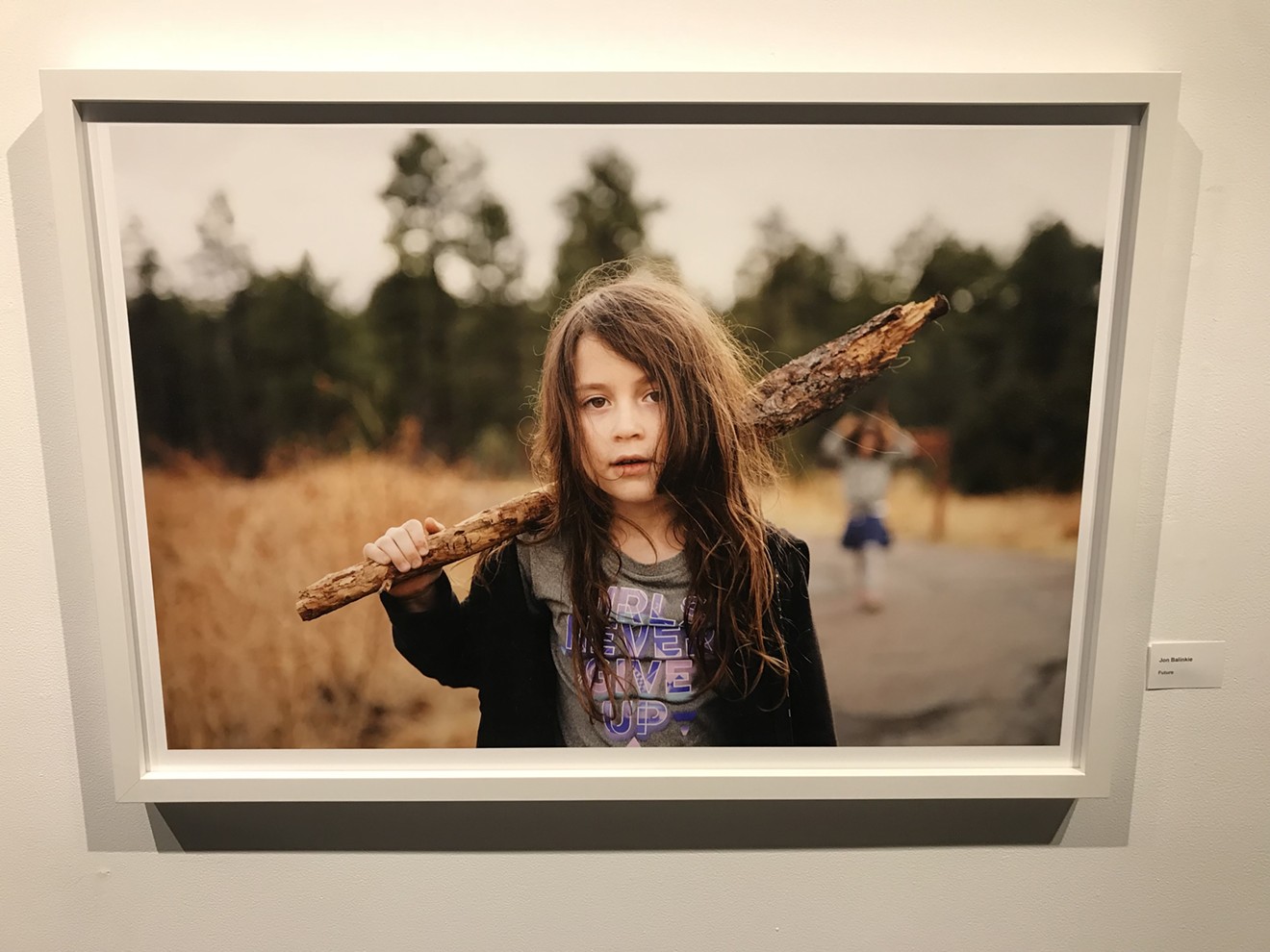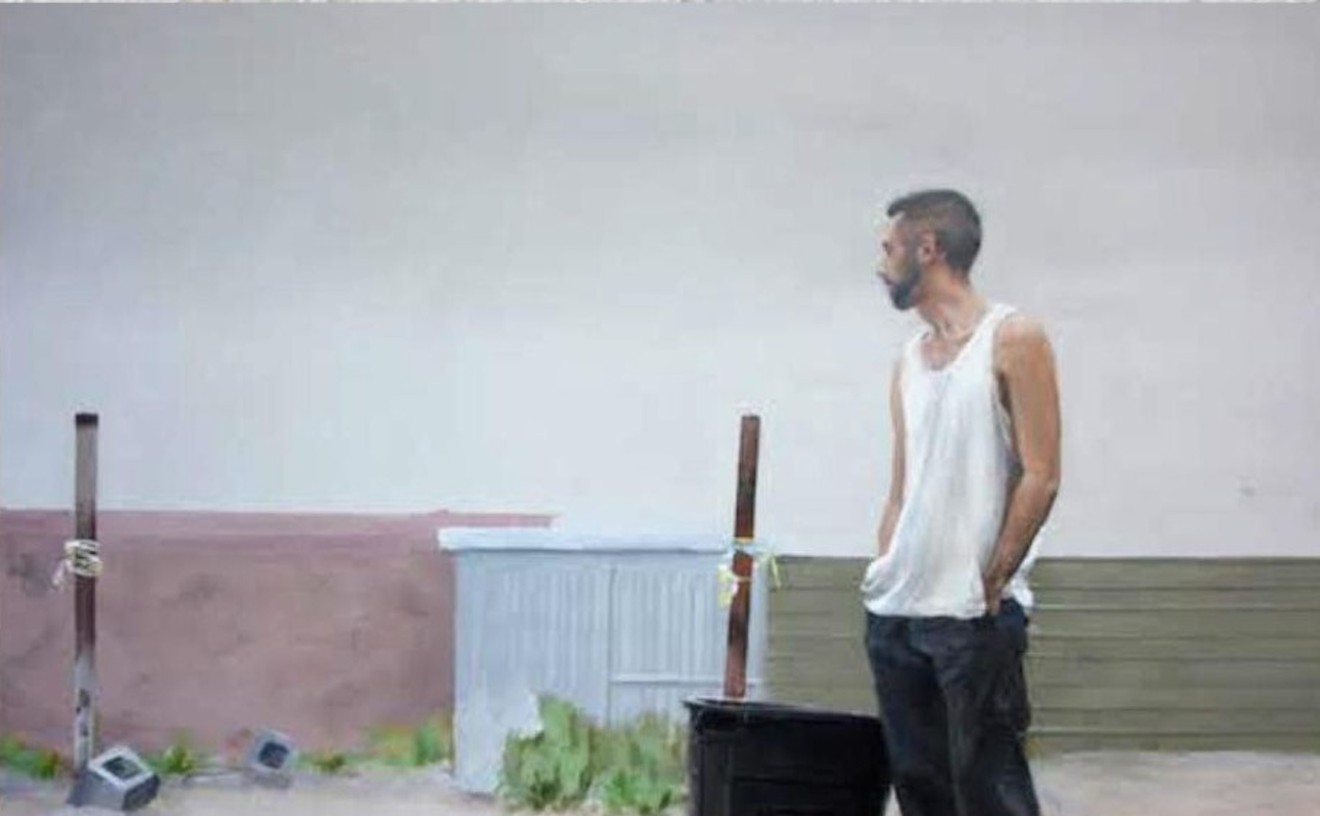“Chaos Theory” was founded by Randy Slack, James Angel, and David Dauncey, who dubbed themselves the 3CarPileUp artist collective. Today, it’s organized by Randy Slack, whose studio is located at Legend City Studios. Slack decides who to invite, which typically includes artists working in various media, such as painting, drawing, sculpture, mixed media, and photography.
This year, creatives using photography and video delivered some of the most intriguing “Chaos Theory” works, using a variety of techniques and capturing a fascinating mix of subjects.
William LeGoullon, whose work often addresses the Arizona desert, showed a work from his “(Un)Intended Targets” series. Bullseyes No. 2 features a neat grid of images, each showing an object shot by someone doing target practice in the desert, with the bright orange color that’s prevalent in hunting attire. It’s a riveting meditation on human relationships to objects and the land.
“Chaos Theory 19” also included a color photograph of a girl standing against the backdrop of a wooded area, holding a large stick over one shoulder. The stick is naturally tapered on one end, resembling either a match or a pencil. Taken by Jon Balinke, the photograph bears a title that was especially prescient on Friday night, as Congress was preparing to appoint a new Supreme Court justice despite accusations of sexual assault against him. Balinke’s piece is called Future.
Annie Lopez, whose cyanotype photography often reflects her family’s immigrant roots, created a piece called Winged (Tony). The central image shows a boy with wings behind his back, and a girl turned away from the camera nearby. It’s surrounded by other images, of a rocking horse and a person walking, as if they were part of a motion study by 19th-century English photographer Eadweard Muybridge.
In years past, “Chaos Theory” exhibitions have included sculptures called televisors created by Steve Gompf using found objects and his own Muybridge-inspired videos. Gompf died in March but his work was still on view this year – in the form of video footage provided by Kathleen Vanesian, who worked with the artist on a catalogue of his work. Titled Parade: The Absolute End of the World, it was projected onto the back wall of the exhibition space.
Several artists manipulated photographic images to create their “Chaos Theory” artworks.

travelling_through_space_because_i_don’t_have_a_body_i’m_a_computer.exe by Daniel Funkhouser.
Lynn Trimble
Another artist, Carolyn Lavender, digitally manipulated images of animals to create a mass exit from the forest. Exit includes not only wildlife you’d expect to find in a forest, but others as well, including a bison and penguin. Here, Lavender draws attention to the ways human interventions are making natural habitats increasingly less habitable for other animal species.
Rembrandt Quiballo’s Bury the Vestal comprises an image taken from video footage, and altered through digital manipulation. It’s the image of a vestal virgin, a woman given the task of keeping a sacred flame burning in ancient Rome. For Quiballo, it signals the downturn of religion, and the way mass media has assumed the role of religion and power of myth in contemporary culture.
It’s not the first time photographers have made an strong showing at “Chaos Theory.” In 2016, for example, monOrchid owner Wayne Rainey exhibited a poignant photograph showing an adjacent building crushed by demolition to make way for a multistory apartment building.
Although none of the photographs in this year’s exhibition create that same feeling of being sucker-punched, they quietly and powerfully reflect the noise of living in contemporary times.















